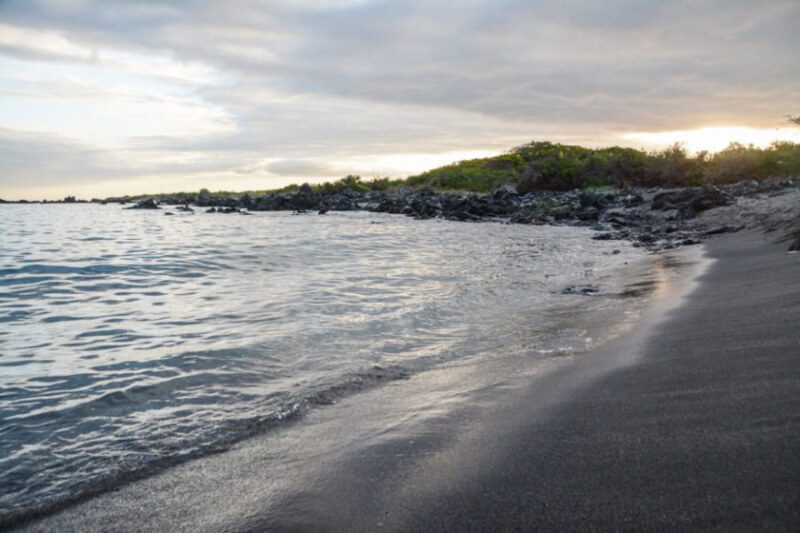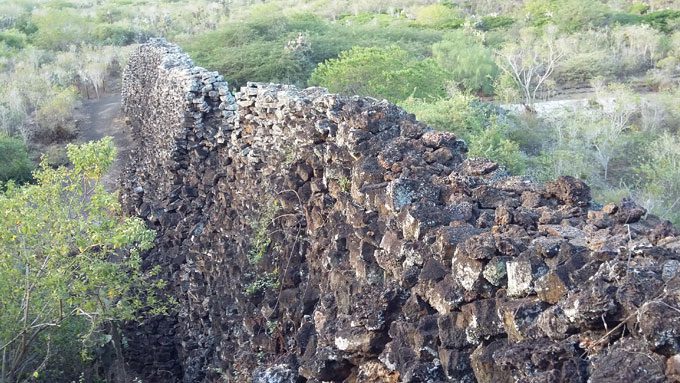The Galapagos is a cluster of volcanic islands sitting astride the equator approximately 559 miles west of South America. Situated at the Galapagos Triple Junction, the islands were formed by the tectonic shifts in the Nazca Plate. While older islands have disappeared, newer landmasses like Fernandina and Isabela are still being formed. A province of Ecuador, they have a population of slightly more than 25,000 inhabitants. Made famous by Charles Darwin’s voyage on the HMS Beagle, the Galapagos are a popular bucket list destination with a rich history that has been woven into science, literature, and the movies.
Discovery and Exploration
While artifacts and other archaeological evidence suggest that the islands were visited during pre-Columbian times, the first recorded sighting of the Galapagos Archipelago was in 1535. The European discovery of the island chain occurred accidentally when Tomas de Berlanga, the Bishop of Panama, was blown off course while sailing to Peru. Berlanga made particular note of the large tortoises he observed when he reported his discovery to King Charles V of Spain. The islands first appeared on maps drawn by Abraham Ortelius and Gerardus Mercator in 1570. They were identified as the Insulae de los Galopegos, or Islands of the Tortoises. Richard Hawkins was the first English captain to visit the islands 23 years later. The islands’ first permanent inhabitant was Patrick Watkins, who was marooned on Floreana in 1807. He lived there for several years raising vegetables and selling them to the crews of visiting whaling vessels before moving to the mainland.
TALK TO A DESTINATION EXPERT

Diego Zapata

Rosa Mena

Sandy Lara

Diego Zapata

Rosa Mena

Sandy Lara
Pirates and Whalers
For more than 300 years after their discovery, the Galapagos Islands were a haven for buccaneers and whalers. English privateers used the Galapagos Archipelago as a base of operation for raiding Spanish galleons that were transporting gold and silver from the New World back to Spain. Using the islands as a refuge after raids, the pirates established ports like Buccaneer Cove on Santiago Island. In 1684, William Ambrose Cowley drew the first crude navigational charts. He named the islands to honor British royalty, but these monikers were later changed to their current Spanish names. During a 1709 voyage to the Galapagos, Woodes Rogers, commander of the Duke, found Alexander Selkirk stranded on the Juan Fernandez Islands. Selkirk’s plight was the inspiration for Daniel Defoe’s story Robinson Crusoe.

With the turn of the 19th century, the last of the pirates were replaced by whalers who hunted the large population of sperm whales that migrated near the islands. The English Galapagos whaling fleet was a theme in the movie “Master and Commander: The Far Side of the World,” which took place during the Napoleonic Wars. The whalers created an unofficial barrel post office on Floreana Island. Information contained in letters found in the barrel aided Captain Porter of the USS Essex to determine the position of the British fleet during the War of 1812. The Galapagos provided numerous sheltered anchorages, freshwater, and an abundance of food. Because the massive tortoises could survive for nearly a year aboard ships, the giant reptiles were caught by the thousands. Sailors consumed the fresh meat during their long sea voyages back to Nantucket, New Bedford, and other whaling ports. Herman Melville, the author of “Moby Dick,” visited the islands in 1841 as a young sailor aboard a whaling ship.
History of Charles Darwin and Colonization
One of the most influential people in Galapagos Islands history is Charles Darwin. He sailed as the naturalist aboard the HMS Beagle in September & October 1835 during its South American charting voyage. Darwin collected geological and biological specimens when he visited the islands of San Cristobal, Floreana, Isabela, and Santiago. He would use these specimens and observations as the basis for his theory of natural selection and influential work “Origin of the Species,” which was published in 1859.
In 1831, General Jose de Villamil was the first person to suggest the permanent colonization of the Galapagos. He persuaded the Ecuadorian government to annex the archipelago a year later. Villamil was appointed the islands’ first governor. The initial colonists were soldiers who had taken part in a failed coup. The men and 80 other settlers created pastures and planted crops. They also introduced donkeys, pigs, goats, and additional cattle to the island of Floreana. By 1852, the settlement was considered a failure. Over the ensuing century, a number of other communities were established on various islands to engage in fishing, canning, farming and dye-making. They would also mine salt for preserving fish. San Cristobal would become the most populous island until the 1960s. As a result, the town of Puerto Baquerizo Moreno became the administrative capital of the archipelago.
The remote nature of the island chain also made it desirable as a penal colony. The first prisons were set up on the islands of San Cristobal and Floreana in the 19th century. Another prison was established on the island of Isabela in 1944. Although it was closed 14 years later, the Wall of Tears in Puerto Villamil remains as a lasting testament to the brutality of the prison system that operated on the islands for more than 125 years.

Discover the Galapagos for yourself aboard Yacht La Pinta!
Modern Era
In 1934, many of the islands were declared wildlife sanctuaries. The Galapagos National Park was created 25 years later to preserve and protect the islands’ unique flora and fauna. The Charles Darwin Research Center opened in 1964. Today, hundreds of scientists and conservationists strive to maintain the archipelago’s distinct habitat. Organized Galapagos Island tours began exploring these incomparable landmasses in the late 1960s. Perhaps, the most important recognition at an international level is UNESCO’s Natural Heritage for Mankind, together with the capital city of Quito. This title has put the Galapagos in the awareness platform for additional worldwide respect. An estimated 200,000 people take Galapagos Islands vacations each year, but only about 80,000 get to explore the islands on a live-aboard option. It does remain as a very exclusive destination.

Javier Garcia

Eduardo Silva

Carolina Escobar
START PLANNING YOUR TRIP

Javier Garcia

Eduardo Silva

Carolina Escobar
Get in touch for more
CONTACT US
Blog Reviewed by: Francisco Dousdebés
Image Credits: Francisco Dousdebés.


